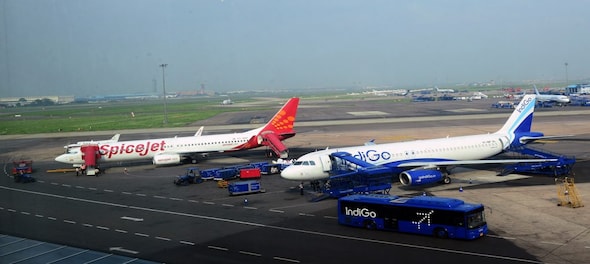
This article is the first installment of a three-part series.
With the impending privatisation — or shutdown — of Air India and the closure of Jet Airways, significant capacity shifts in the Indian airline space continue. Remember this has been happening over less than 12 months. Quantitatively more than 25 percent capacity will shift in a short span of time. The Indian aviation market, which split by business model had four low-cost carriers and three full-service carriers not long ago, will continue to segment.
As such, for a new entrant looking to enter the market, there are several opportunities. But the question remains — is India ready for a new airline?
The market is segmenting gradually
While India remains a low-cost market, segmentation is gradually gaining ground. Currently, all efforts are focused on the 130 million travellers with a per capita income of $9,000 and as such supply and pricing have driven demand. There has been one commoditised offering to travellers with very little difference in asset types (aircraft), stage lengths (flight distances) and product offerings (the overall experience). But it is these very aspects that can drive segmentation.
Behavioural changes are also evolving. Travel to any metro airport is met with long queues, altercations in cases of delays and casual chatter comparing airports to railways stations. This is leading to a new generation of travellers who may not necessarily choose price as a key determinant.
That too presents an opportunity for airlines. As the famous quote attributed to the astronomer Carl Sagan goes, “Absence of evidence is not evidence of absence.” In this case, simply because a model where consumers don’t essentially choose price as a key determinant has not been leveraged profitably, it does not mean that the opportunity does not exist.
Finally, if global demand profiles are to be used as a proxy, there is a shift to the middle. There too, lends itself to segmentation from which value can be created and captured.
With new airports coming up, capacity will be available
Airlines till now have used the non-availability of slots to dominate airports and create a competitive barrier. Indeed, when Jet Airways ceased operations airlines rushed to grab its slots even though it meant inducting a second asset type
But with new airport capacity coming online, this advantage too is diminished. Bengaluru has seen the addition of a second runway, the national capital region will see a fourth runway and a new airport at Jewar and Mumbai, the financial hub may also see a new airport within the next five years. Other metros like Kolkata, Chennai and Hyderabad have efficiency projects underway which may also free-up some additional slots. The availability of slots changes the market dynamics. And as such it provides enhanced revenue potential for new entrants.
Liquidity constraints are forcing a rethink
Constrained liquidity remains a key challenge for India’s airlines. This is not expected to ease anytime soon and presents a challenge for all airlines except one. It does not help that in the background there is a drastic slowdown in consumption, declining GDP growth, a falling rupee and minimal capex spending by corporates. Add to that the challenges with Boeing and Pratt and Whitney – though these are a double-edged sword because while they are impacting capacity growth, the compensation payments are also helping to prop up finances.
The fact remains that lending to airlines is severely constrained and the failure of Jet Airways continues to haunt lenders. That this is a large airline failure which comes just seven years after Kingfisher airlines where the default is to the tune of Rs 9,041 crore only exacerbates the situation. The consequence: banks are negative on the airline sector.
Undercapitalised airlines pose a challenge as cutting off credit to the airline means a significant impact on the “aviation economy”. Some airlines continue to add capacity for the cash-flows from financing, while others are tempering capacity growth for the very same reason. Pricing below cost towards cash-flows continues, forcing the rest of the industry to follow. Marquee investors have also been approached for convertible offerings.
Sadly, what may hold the key is cross-border equity. India’s airlines have now worked with cross-border equity so the complexities are being unraveled. Yet the spread between reality and expectations can be large and for a host of reasons foreign airlines are wary of a minority stake in Indian airlines especially since it does not come with a provision of “effective control.”
A proposal to relax the Substantial Ownership and Effective Control (SOEC) norms was recently rejected by the government. But as the constraints abound and as India’s airlines fail to have a united front or at the very least a united body that puts forth their position, a reconsideration cannot be ruled out.
The SOEC continues to be a very critical provision and is explored in part 2 of this series.
(to be continued…)
Satyendra Pandey is the former head of strategy at a fast-growing airline. Previously, he was with the Centre for Aviation (CAPA) where he led the advisory and research teams. Satyendra has been involved in restructuring, scaling and turnarounds.
Read his columns here.
First Published: Jan 21, 2020 9:00 AM IST
Check out our in-depth Market Coverage, Business News & get real-time Stock Market Updates on CNBC-TV18. Also, Watch our channels CNBC-TV18, CNBC Awaaz and CNBC Bajar Live on-the-go!


Lok Sabha Election 2024: Issues raised by Prime Minister Modi have not resonated with people of Tamil Nadu, says Congress
Apr 19, 2024 11:38 PM
West Bengal Lok Sabha elections 2024: A look at Congress candidates
Apr 19, 2024 8:45 PM

